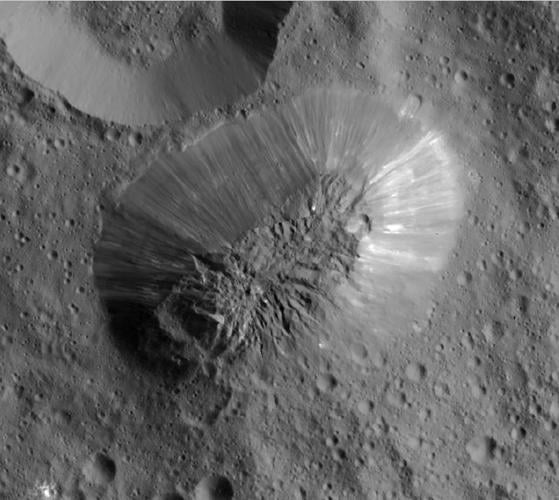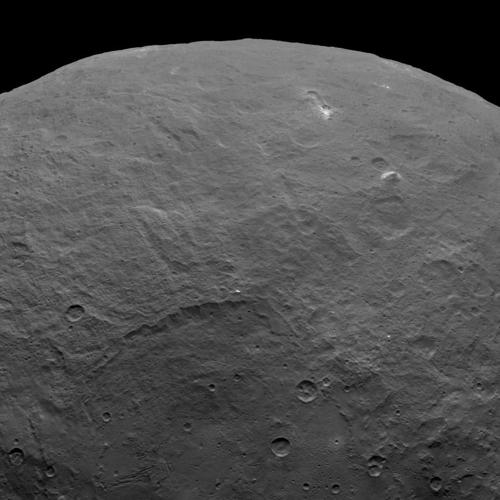Remember Ceres, the really big asteroid with the mysterious bright spots and the pyramid-shaped mountain?
As NASA’s Dawn spacecraft approached Ceres in March 2015, the alien hunters and UFOlogists among us had a field day speculating about the ancient or current civilizations that built such features.
Turns out, after 17 months of detailed orbital study, that the scientific truth is more exciting than the sci-fi speculation, said David Williams, associate research professor at Arizona State University’s School of Earth and Space Exploration.
“The reality of the nature of geology in our solar system is very incredible and in many ways more fascinating than the human imagination can conceive,” Williams said.
Williams is on a team of Dawn mission scientists poring over images of Ceres that captured its geologic features and instruments that identified its chemical composition.
Ahuna mons, that 4-kilometer-high mountain, could have been the backdrop for Disney’s “Frozen.”
“We think it’s some sort of cyrovolcanic dome,” said Williams. He said the mountain is formed by the eruption of “molten ice” — “some sort of very viscous, water-rich material that wells up and over time builds that mountain.”
Planetary scientists have found features on icy planets and moons that suggest cryovolcanism, but this is the first time such features have been studied in detail, Williams said.
How it all works is still to be determined, he said.
Judging by the lack of cratering on the mountain’s surface, the activity that formed it happened recently — in geologic time.
That means time measured in the millions of years, rather than billions.
Mark Sykes, president and CEO of the Tucson-based Planetary Science Institute, said he thinks some of the features on Ceres are quite young.
“It’s not even millions of years ago, because there are no craters on the white spots, no impact structures on Ahuna mons.
“I would say younger than millions of years and that’s like saying it’s today,” Sykes said.
Six studies by the Dawn science team are published Friday, Sept. 2, in the journal Science, including one that verified the presence of water ice in a crater called Oxo.
Ceres is dynamic, said Sykes, whose institute has six members on the Dawn science team.
“It’s not like the moon where the only new thing is where something hit it,” Sykes said.
The mission at Ceres was extended for another year by NASA, which announced this week that Dawn had completed its low-altitude observations and would be moving to a higher altitude that will give it a view of previously unobserved terrain.
The move comes as Ceres approaches perihelion, the point in its orbit where it is closest to the sun. If conditions are still conducive to ice eruptions occurring, that warming could induce them, Sykes and Williams said.
“Hope springs eternal,” said Sykes.





